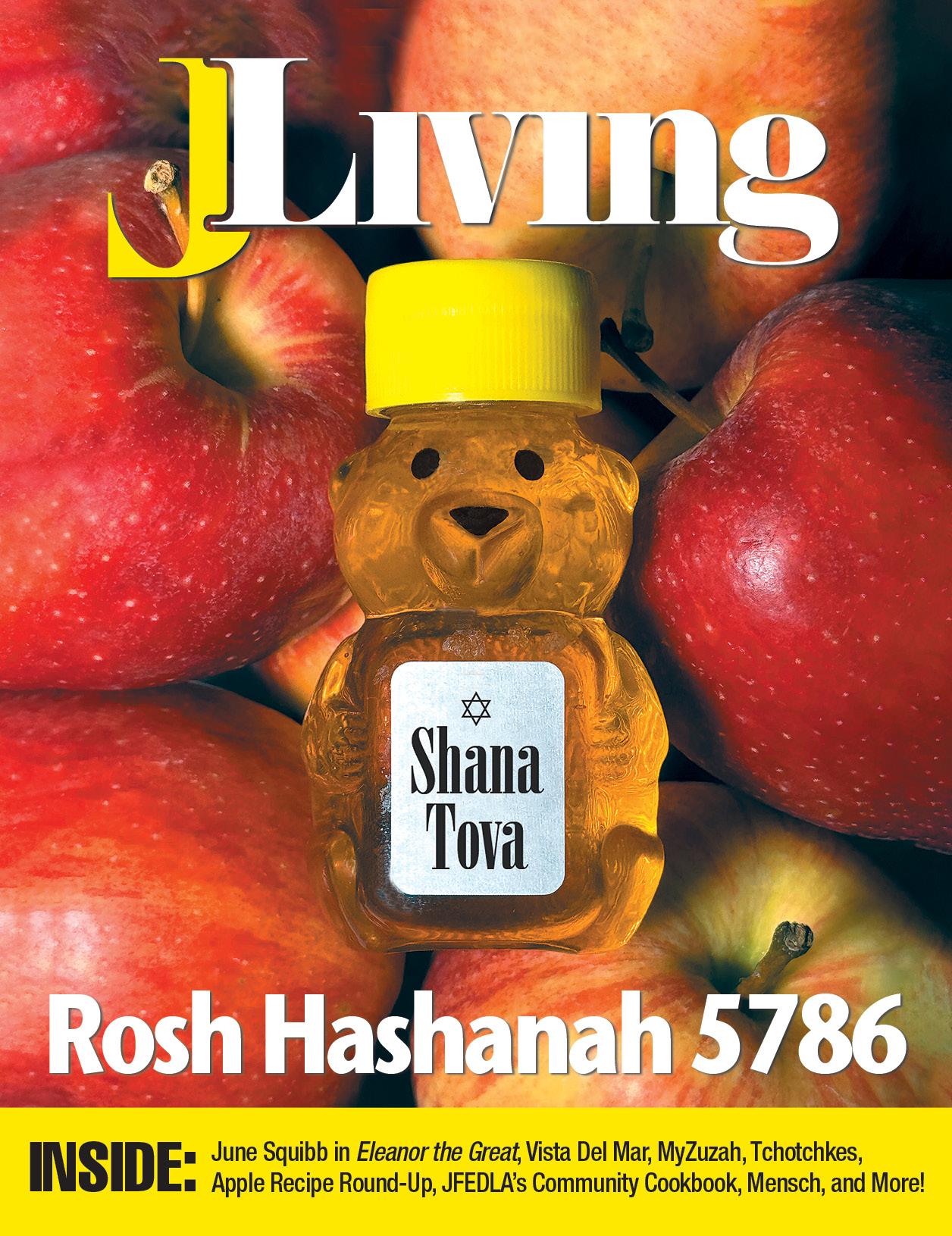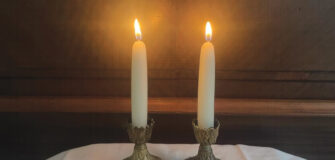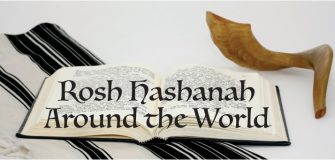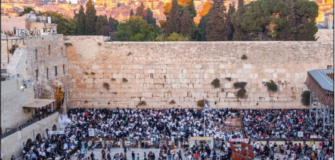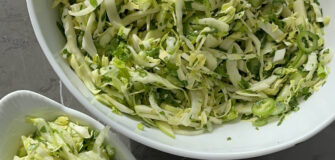Mishegoss – The Ketubah
What is a Ketubah?
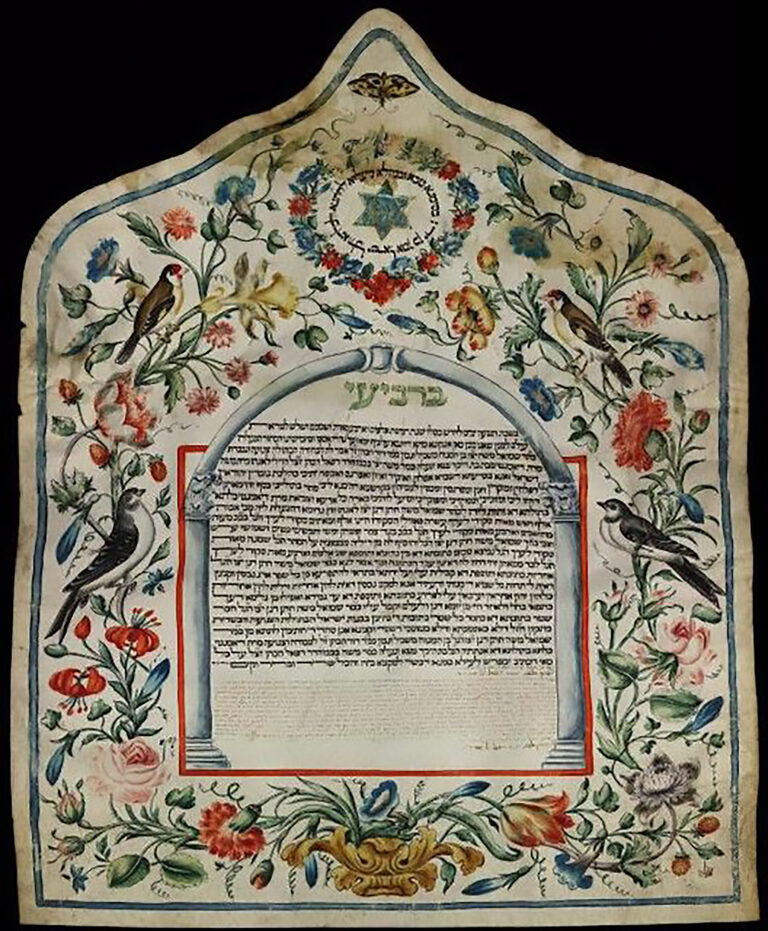
A ketubah is a Jewish marriage contract that is signed right before the wedding ceremony. The groom must present the bride with a contract for her protection. In it, he asks the bride to be his wife according to the law of Moses and Israel and that he will work, provide and support her, providing shelter, food, clothing and sexual fulfillment. The ketubah also provides for the bride in case of divorce or the death of the husband. If the bride agrees to the offer, the contract is signed by two witnesses.
The traditional ketubah is written in Aramaic, but modern versions can be written in Hebrew, English, or other languages. Many couples have adapted the text to be more gender inclusive and to focus less on contractual agreements, and more on the hope of a shared future, signed by both parties.
The Origin of the Ketubah
The origin of the ketubah may be found in Shemot 22:15-16, where the text describes the obligation for a bridegroom to pay her father “mohar” if the couple goes on to marry. Many sages understood that the terms “mohar” and “ketubah” were interchangeable and thus obligatory. Of course, other Jewish sages, including Rambam, believe that the ketubah and the “mohar” are not rooted together and that the custom is more based on Rabbinic law than originating from the Torah.
Rooted in Torah or by rabbinic enactment, the ketubah has always held a position of great importance. Rabbi Meir, a sage in the 2nd century in the times of the Mishna, explained the importance of the Ketubah: “It is forbidden for the husband to live with his wife without a ketubah even for one hour.”
Ancona Ketubot
In the 17th to 19th centuries, Ancona, Italy, was the heart of the golden age and center of ketubah artistry. Ancona ketubot are easily distinguishable, with their distinctive use of color and beautiful designs. They often feature a pointed upper border known as the ‘ogee arch,’ which is reminiscent of Gothic architecture.
Sharon Horowitz, a senior reference librarian at the Library of Congress, describes a 1722 ketubah in the LOC’s collection thusly: “Created in the period when Italy was the center of Hebrew printing, the design of this ketubah may have been inspired by title pages of Hebrew books published at the time. The title page art is a gateway inviting the reader into the text. In the ketubah pictured, a simple arch (or gateway), supported by two Corinthian columns, frames the text, possibly symbolizing the bride and groom’s entry into a new life together.”
Exquisite ketubahs became a way to showcase wealth, and in the 1776 Pragmatica da osservarsi da gl’ebrei del ghetto d’Ancona, the proclamation regarding the sumptuary regulations of Ancona’s Jewish community, the Rabbi put a limit on what one can spend to commission a ketubah.
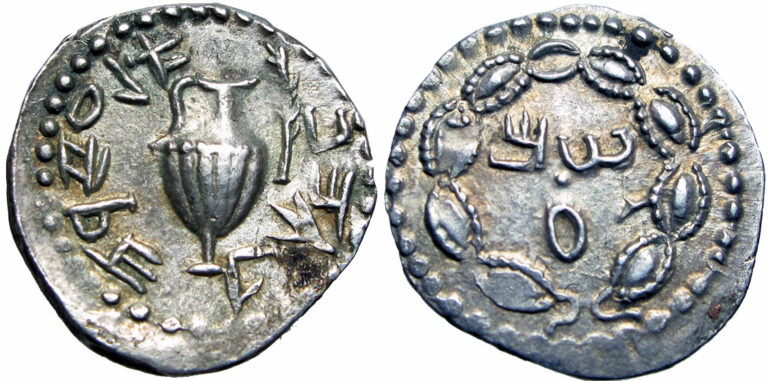
The Price of Divorce
In the unfortunate event of a divorce, the ketubah plays a critical role in providing for the wife. The traditional text cites the amount of 200 zuz as the husband’s obligation to pay his wife. But what is 200 zuz worth? Using the value of the coin, Rabbinic sources say a Zuz is the equivalent of 3.5078 grams of silver, making 200 zuz weigh 24.7466 ounces with a total value of $732. Another approach put forth by our sages in the Mishnah and the Jerusalem Talmud (Peah 8:7) is that the 200 zuz is meant to correspond to a year’s worth of support for a single person — that would be close to $50,000 in Los Angeles. Finally, we can use our Passover knowledge that a baby goat was worth 2 zuzim. Looking at prices of baby goats in Southern California, results range from $350-$700 per goat. So, 200 zuz would get you 100 goats, or $35,000 to $70,000!

